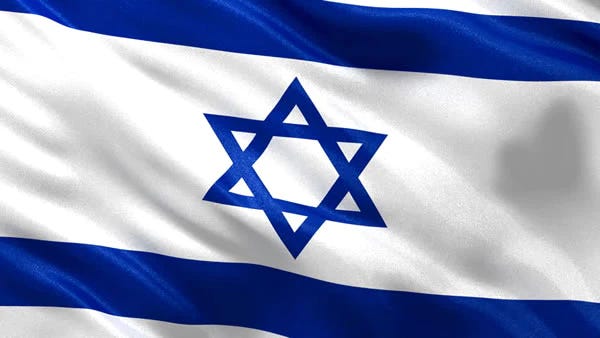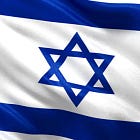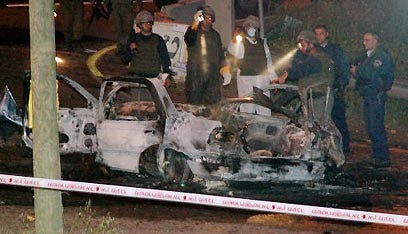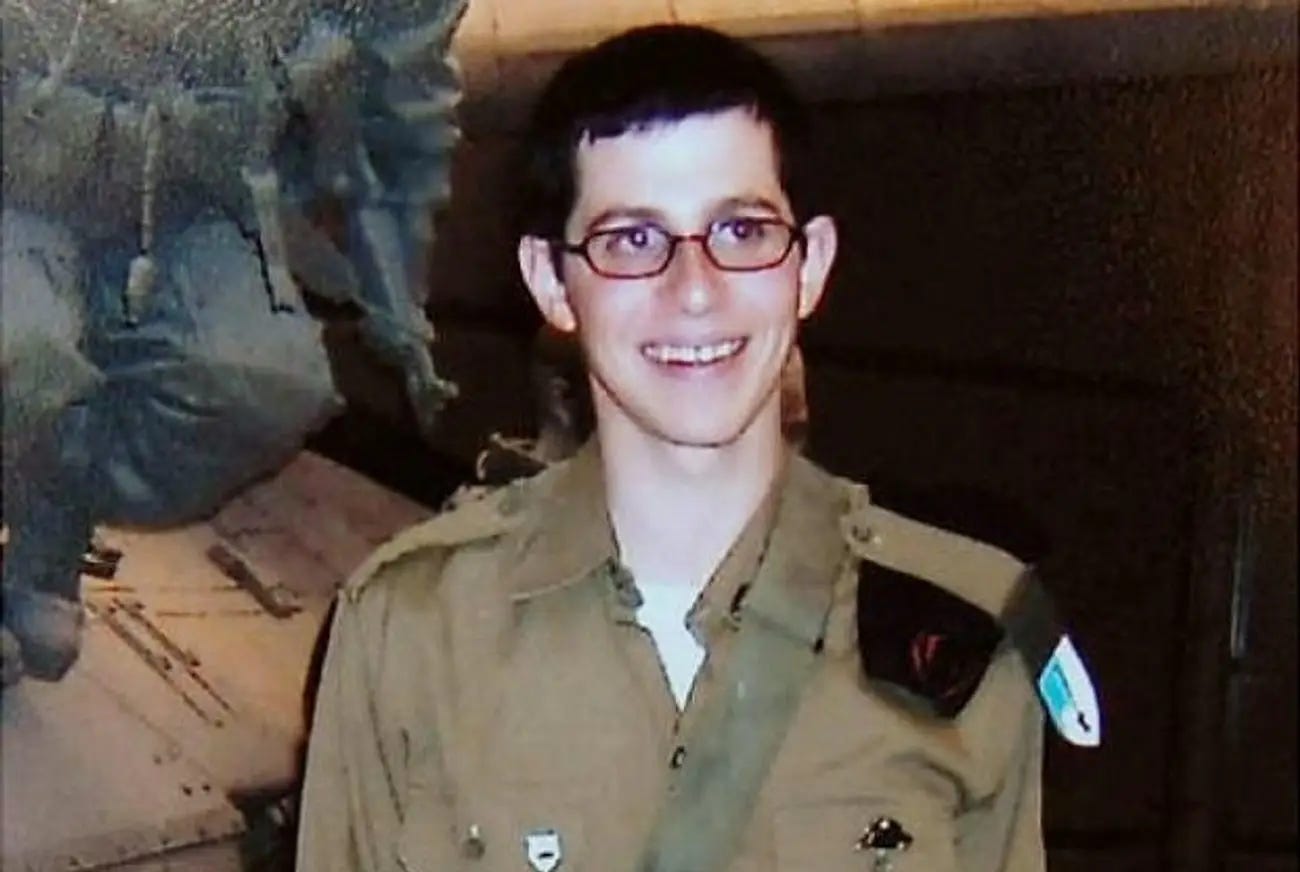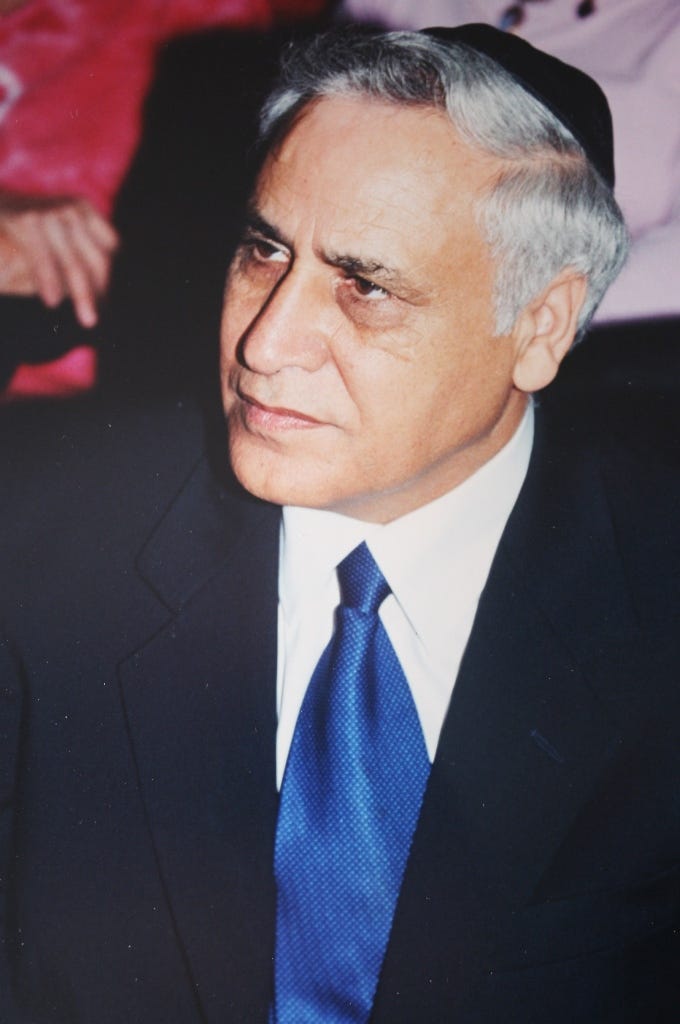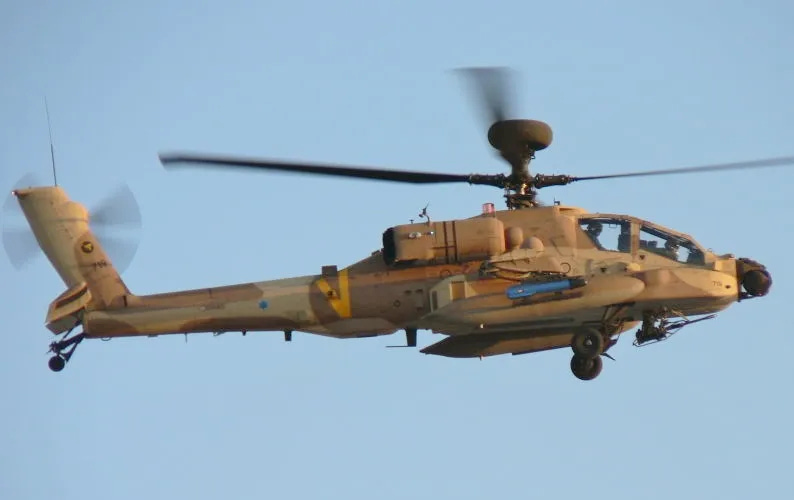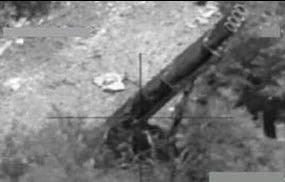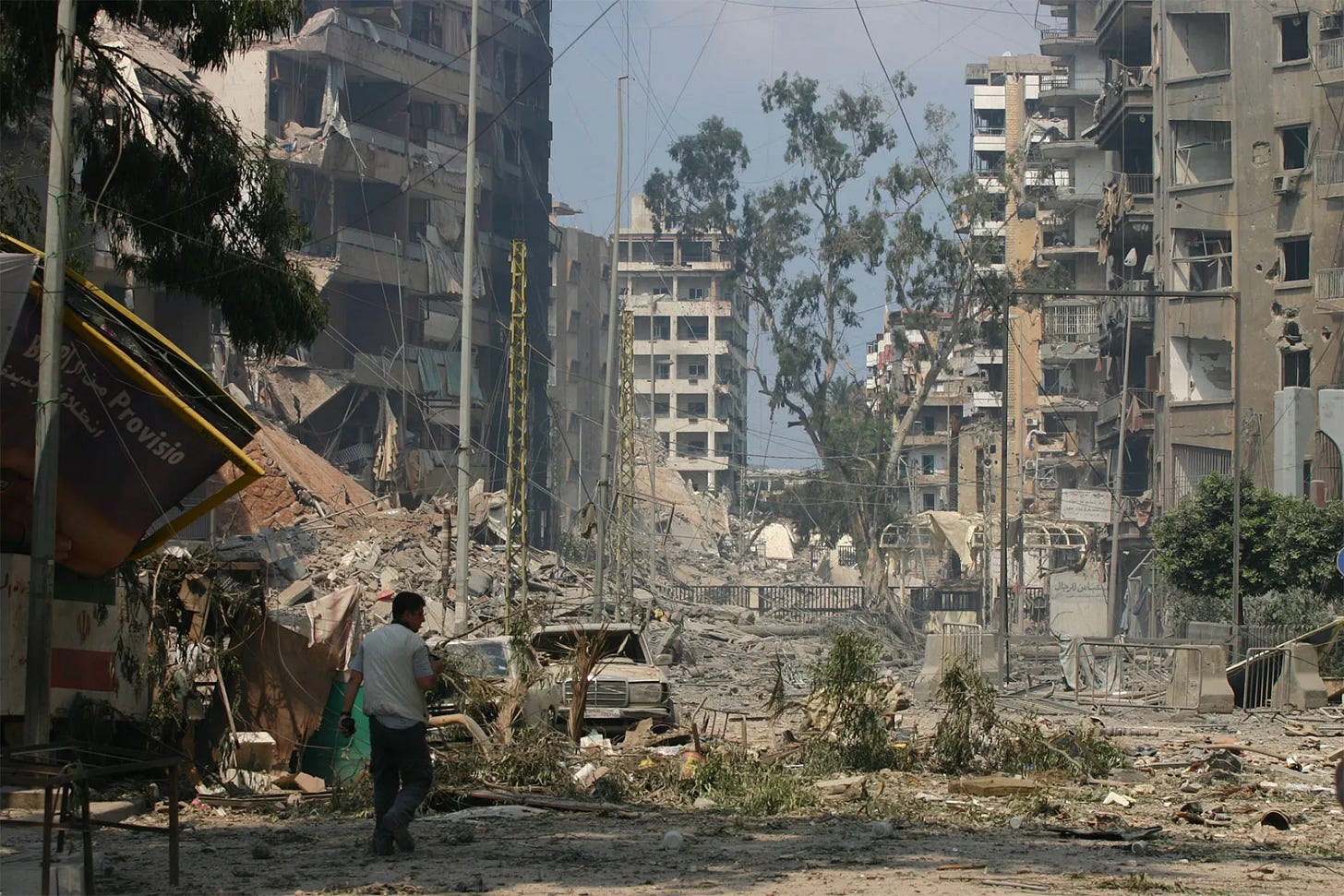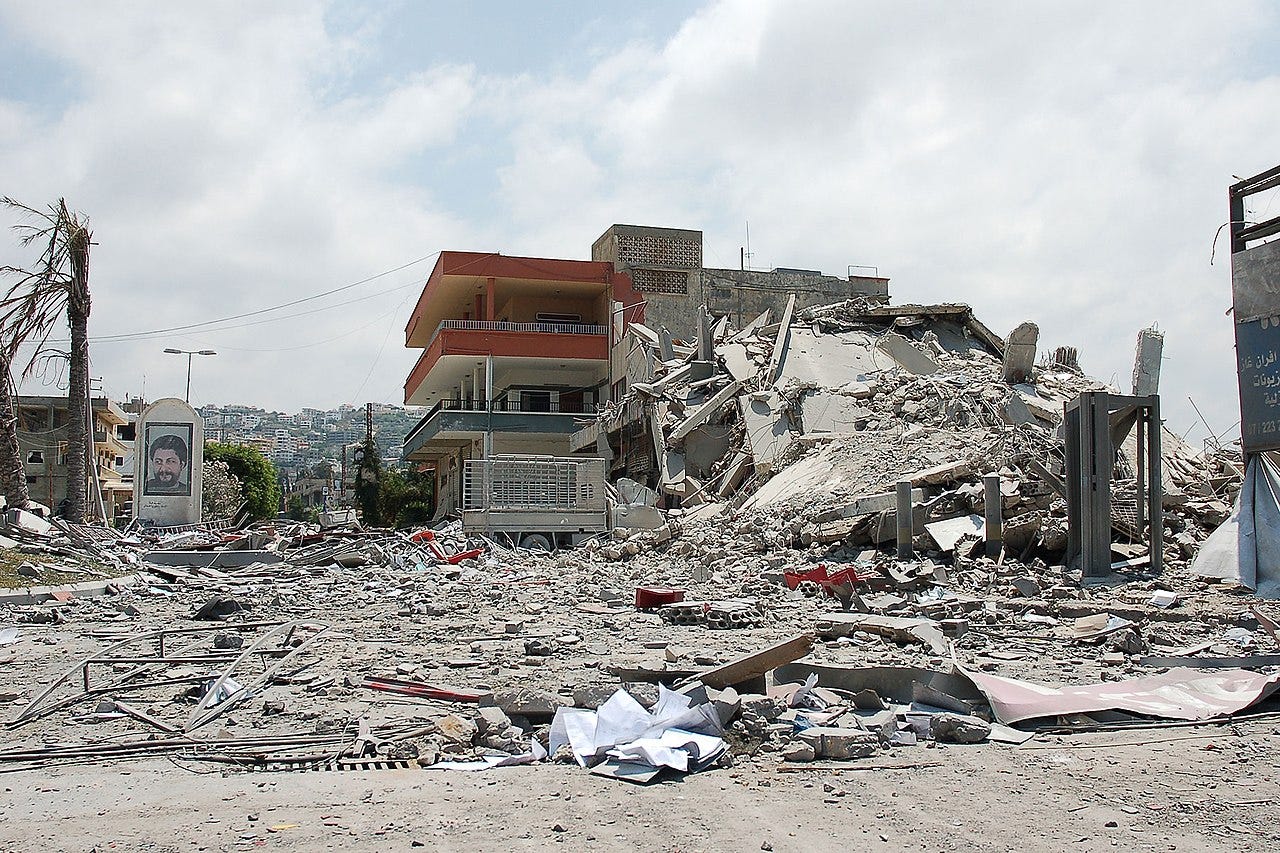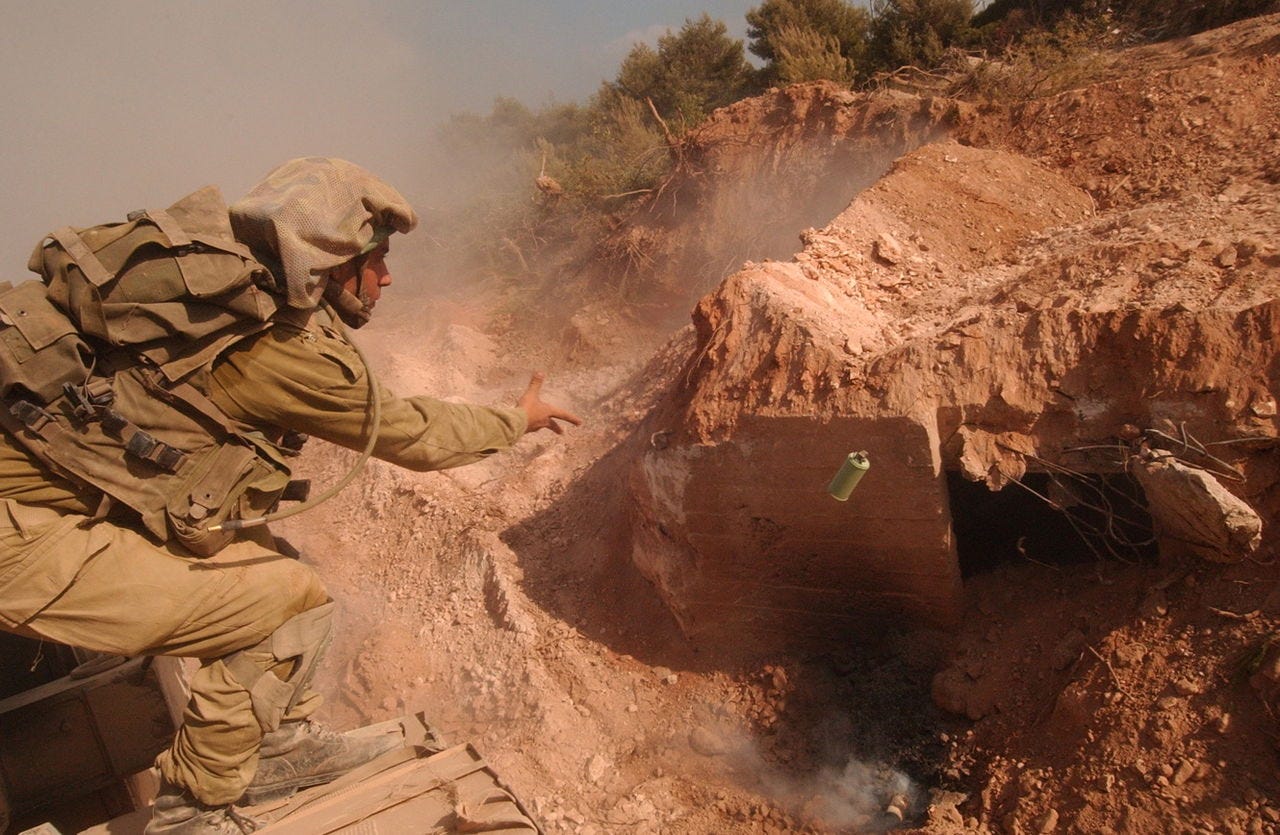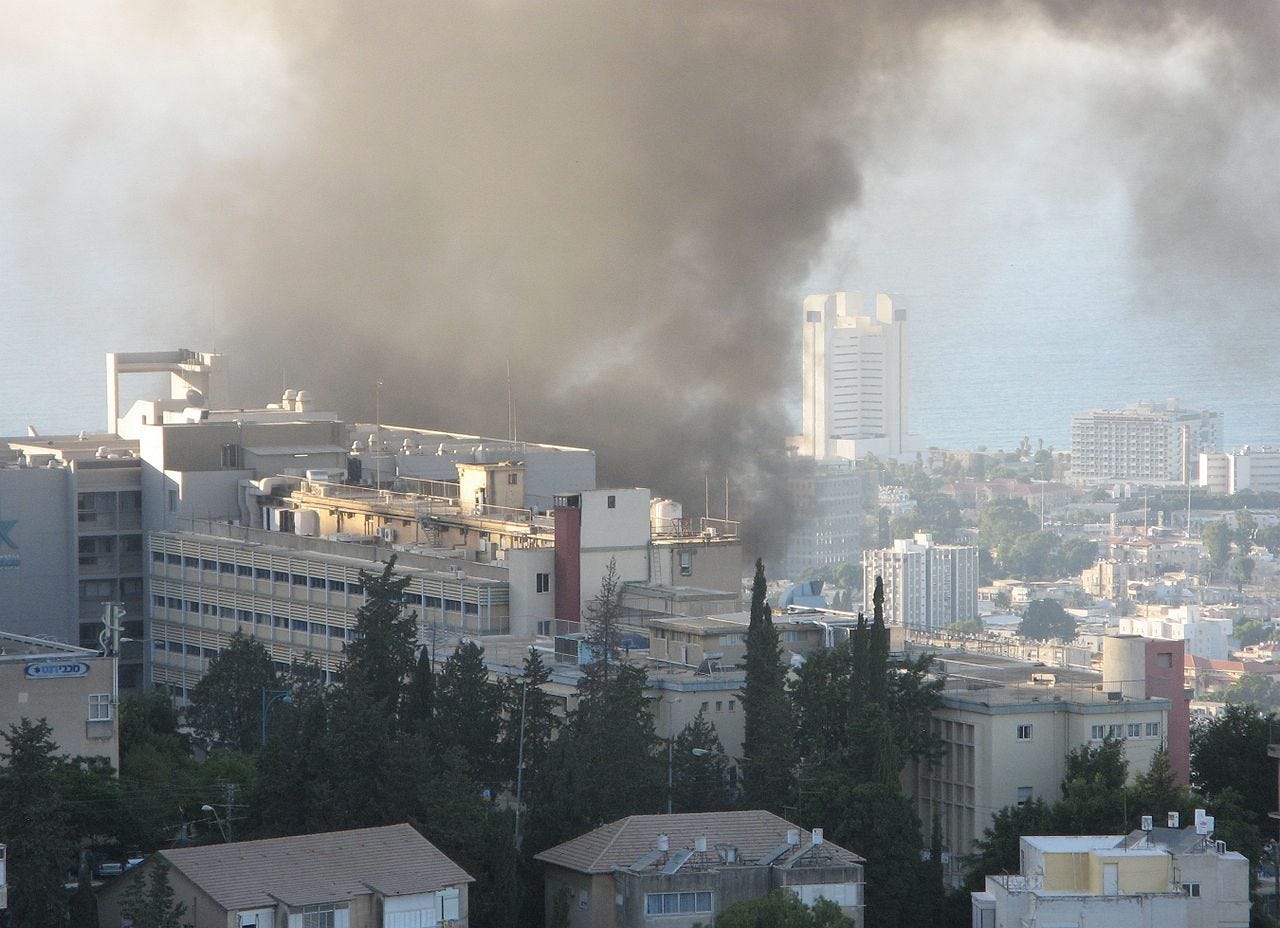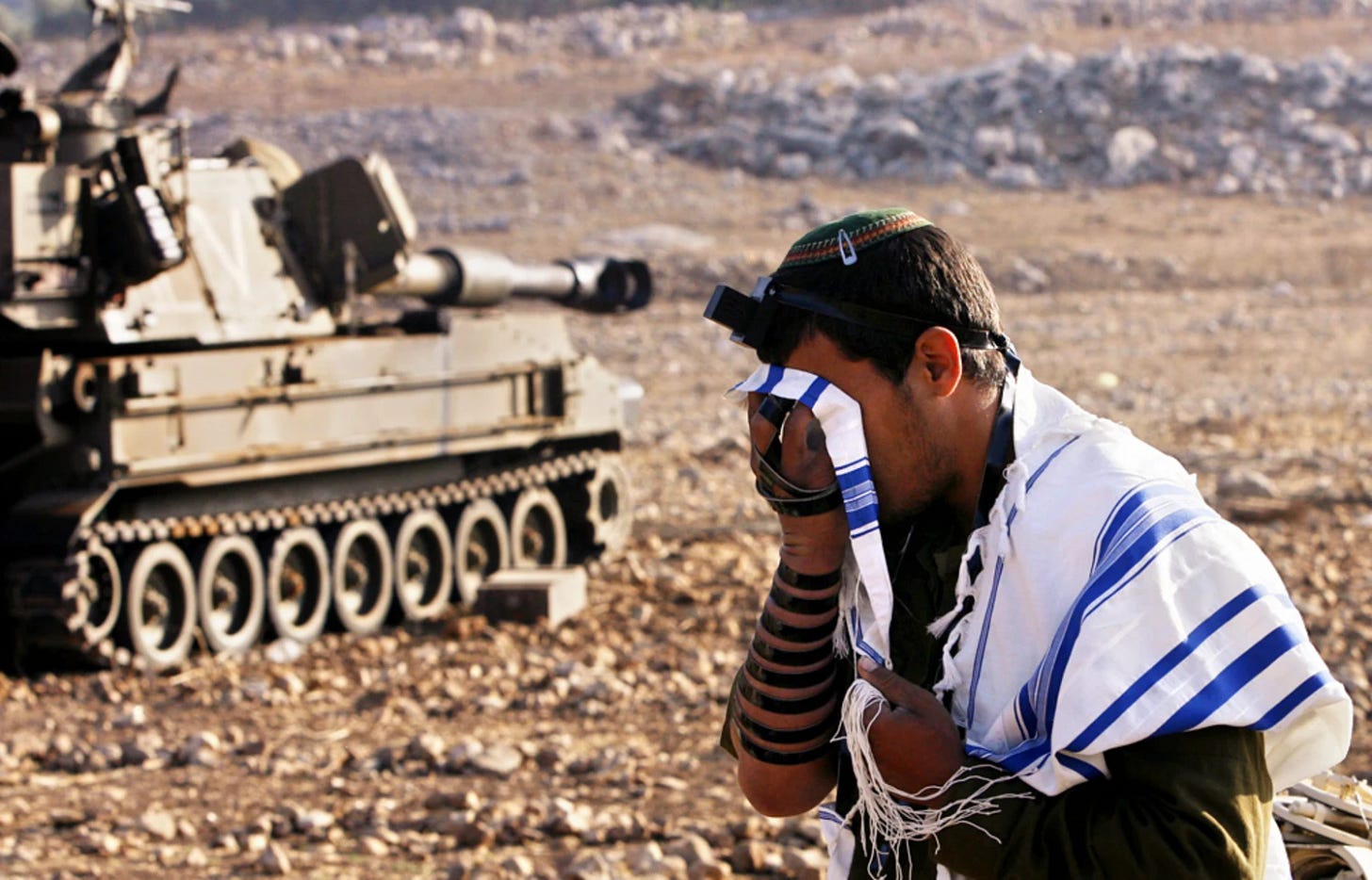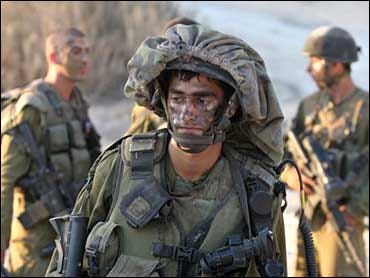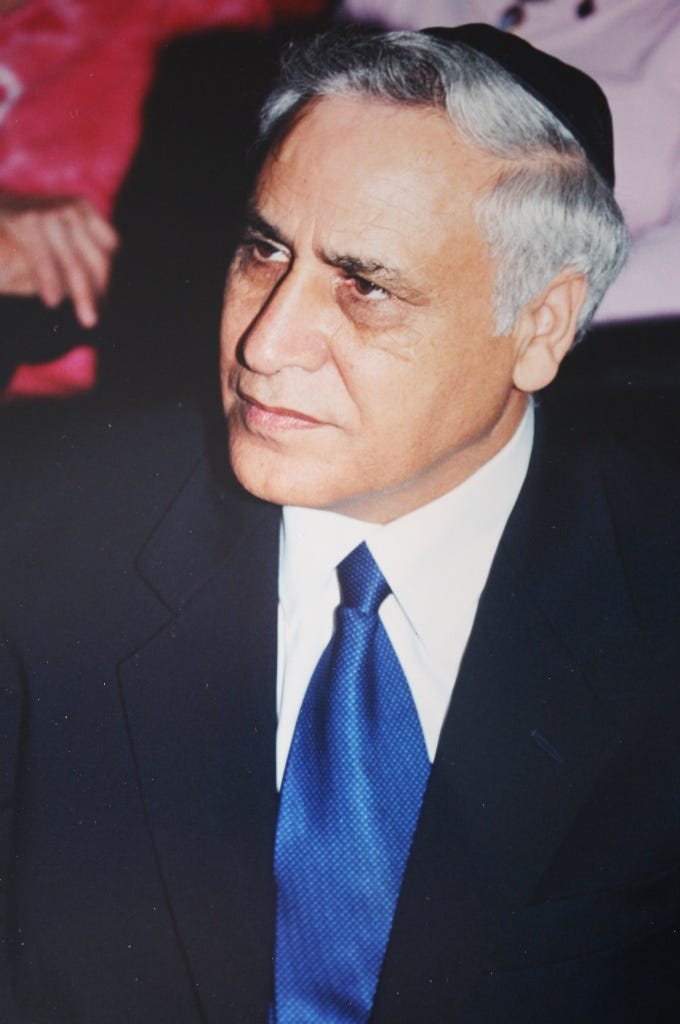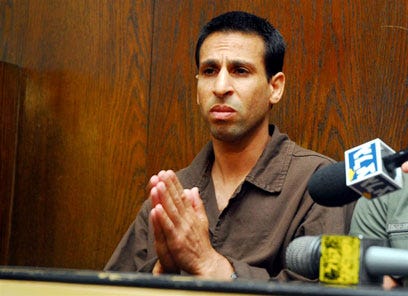In my last post, I covered 2003 to 2005. Click the link below, if you missed it.
Today I will look at the important year of 2006 and another invasion of Lebanon.
2006
January 4 2006: Prime Minister Ariel Sharon suffers a severe hemorrhagic stroke and falls into a coma. As a result, Sharon's deputy Ehud Olmert becomes acting Prime Minister.
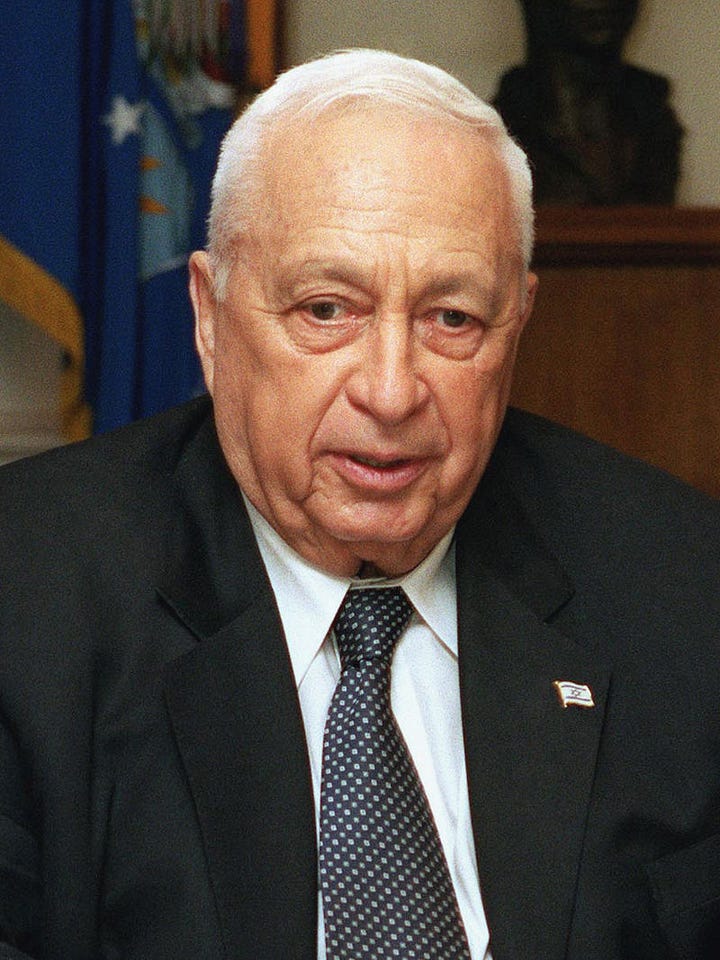
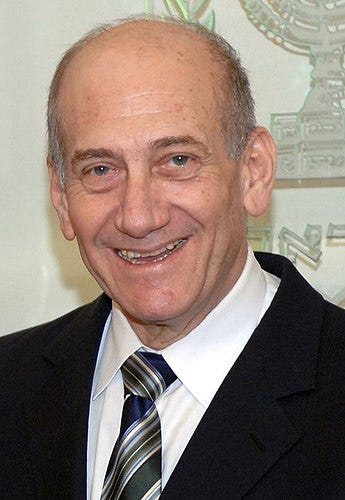
January 25 2006: Hamas wins the majority of seats in the Palestinian Authority election. Israel, the United States, the European Union, and several other countries cut off their aid to the Palestinian Authority. They view Hamas as a terrorist organization that rejects Israel's right to exist.
February 1 2006: The demolition of nine permanent structures in the Israeli settlement of Amona in the central West Bank, escalates into a violent confrontation between the police and a Settlers Special Patrol Unit, in which hundreds of settlers and dozens of police officers are injured.
February 3 2006: At least three Qassam rockets are fired from the Gaza Strip at Israeli civilian targets. One rocket strikes a home in kibbutz Karmia, injuring four people, including a one-year-old infant. The home belongs to a family recently evicted from the Gaza Strip during the 2005 unilateral disengagement.
February 14 2006: The Tel Aviv Magistrates Court sentences Omri Sharon, the Israeli politician and son of former Israeli Prime Minister Ariel Sharon to a nine-month suspended sentence and a NIS 300,000 fine after he is convicted of violating political fund-raising law and providing false testimony.
March 23 2006: Mossad agents capture the West Bank Hamas military commander, Ibrahim Hamed during a raid in Ramallah. He was accused of ordering suicide bombings during the al-Aqsa Intifada.
March 30 2006: An al-Aqsa Martyrs’ Brigade suicide bomber disguised as an Orthodox Jewish hitchhiker wearing hidden explosives attached to his body, boarded an Israeli vehicle. The suicide bomber blew himself up near the entrance to the Israeli settlement Kedumin near the gas station outside of the village. The blast killed four Israeli civilians (three inside the car and another person who was near the vehicle).
April 17 2006: A Islamic Jihad suicide bomber blew himself up at the entrance of a busy shawarma restaurant, near the Old Central Bus Station in Tel Aviv. Eleven Israelis are killed and 70 wounded.
June 12 2006: Five people are killed, and 80 injured, when an Israeli train travelling between Tel Aviv and Haifa collides with a truck on a level crossing near Netanya.
June 25 2006: A group of Hamas fighters use a tunnel to infiltrate an IDF post at the border with the Gaza Strip. They kill two soldiers and capture Gilead Shalit, taking him back into the Gaza Strip. Shalit was held by Hamas until 2011.
June 26 2006: In response to the kidnapping of soldier Gilead Shalit, the IDF launches Operation Summer Rains.
June 25 2006: In response to Operation Summer Rains, the Popular Resistance Committees kidnap 18-year-old Eliyahu Asheri. They demand an end to Operation Summer Rains or they will execute Asheri, film it and release it to the public. In reality, they shot him in the head and hour after kidnapping him.
July 6 2006: President of Israel, Moshe Katsav, complained to Menachem Mazuz the Attorney General of Israel, that a female employee was blackmailing him. The investigation quickly turned against Katsav as the employee, referred to as A. (later identified as Orly Revivo), who worked with Katsav when he was Minister of Tourism, claimed that Katsav raped her twice and sexually harassed her in various other ways.
Cause of the 2006 invasion
July 12 2006: In the early morning, Hezbollah fighters crossed the border into northern Israel, using wire cutters and explosives to breach the fence. Another squad of Hezbollah fighters positioned itself in thick undergrowth on the Lebanese side of the border. At 2:20 am, the IDF noted a "red touch", meaning that someone or something had touched the electric border fence, in the area adjacent to Milepost 105. An Israeli patrol scanned the area but did not spot the Hezbollah fighters who had crossed into Israel. At 9:00 am the attack began. Hezbollah used Katyusha rockets and mortar attacks on Israeli military positions and border villages, including Zar'it and Shlomi, two civilians were wounded. Simultaneously, Hezbollah fighters fired on seven army posts, knocking out surveillance cameras and command communications. At about same time, the Hezbollah fighters in ambush positions at Milepost 105 attacked two Israeli armored Humvees carrying seven soldiers on a routine patrol of the area. As the Humvees passed, drove around a bend and were completely exposed, the Hezbollah team still inside Lebanon attacked the trailing vehicle with anti-tank missiles and heavy machine gun fire. One soldier was killed by the initial attack and the other two were killed as the tried to escape the burning vehicle. The team inside Israel hit the other Humvee with an RPG, wounding all four soldiers, three of them seriously. Two of the soldiers managed to hid in some nearby bushes, right before the Hezbollah fighters arrived and took the other two soldiers with them back into Lebanon.
About 45 minutes after the attack, eight soldiers arrived at the scene of the attack, the patrol encountered the two wounded soldiers and the two destroyed Humvees, along with two bodies lying next to one of the Humvees with a third body visible inside. A quick count verified the fears of an abduction. That caused the implementation of the Hannibal Directive, (an IDF order stating that abductions of Israeli soldiers must be prevented by all means, including shooting at or shelling a get-away car, thereby risking the lives of the captives), this triggered an instant aerial surveillance and airstrikes inside Lebanon to limit Hezbollah's ability to move the soldiers it had seized. A Merkava Mark II tank a Achzarit APC
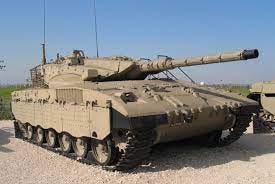
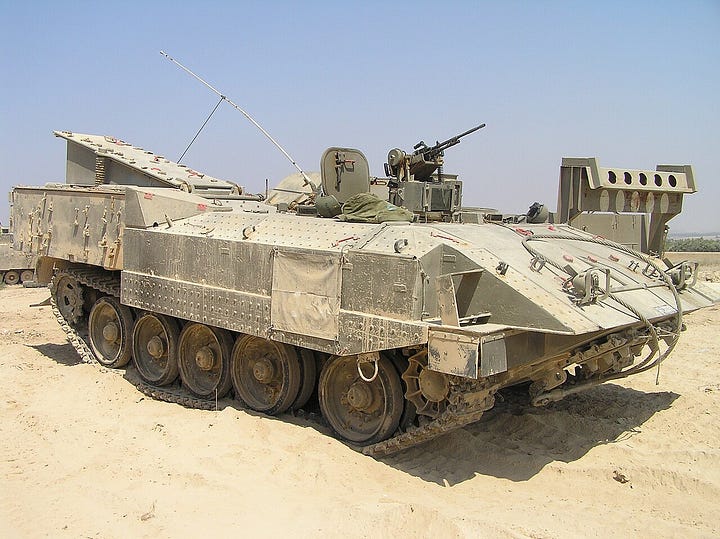
and a Apache helicopter in pursuit. Crossing into Lebanon, they headed for a known Hezbollah outpost along the border. The tank was destroyed by an IED, killing the crew of four. One soldier was killed and two wounded by mortar fire as they attempted to recover the bodies of the tank crewmen.
The IDF confirmed the capture of the two Israeli soldiers on July 13, both captured soldiers were reservists on their last day of operational duty. Hezbollah released a statement saying "Implementing our promise to free Arab prisoners in Israeli jails, our strugglers have captured two Israeli soldiers in southern Lebanon”. Later on, Hezbollah leader, Hassan Nasrallah, declared that "No military operation will return them…[t]he prisoners will not be returned except through one way: indirect negotiations and a trade of prisoners."
The Second Lebanon War
On Thursday, July 13, in response to the kidnapping of two IDF soldiers, Israel began implementing a land and sea blockade of Lebanon. The Beirut International Airport, (the sole international airport in Lebanon), was bombed, forcing all international flights to be diverted to Cyprus. In addition, infrastructure throughout Lebanon was bombed, roads and bridges were destroyed cutting off southern Lebanon from Beirut. Israeli jets expanded their airstrikes and attacked two Lebanese military air bases, destroying the runways, which Israel claims were used by Hezbollah to transfer supplies. There were also attacks against the Rayak air base in the eastern Bekaa Valley near the Syrian border and the Qulayaat air base, also near the Syrian border. The Lebanese government called for a cease-fire, claiming the Israeli response was "disproportionate", a view echoed by France and Russia. The next day Hezbollah, (or the Lebanese Army, it was never determined which), fired several anti-ship missiles at the Israeli Navy vessels enforcing the blockade off Beruit, one Israeli Navy vessel was hit, killing three sailors and wounding ten, however the vessel was not seriously damaged. An Egyptian merchant ship was also struck by a missile and sunk but the crew safely abandoned ship. Hezbollah also launched 100 Katyusha rockets at towns and kibbutzim across northern Israel and the residents of Haifa were ordered into bomb shelters because of rocket attacks there. On July 15, Defense Minister Amir Peretz declared martial law in northern Israel and moved Patriot anti-missile batteries to Haifa in order to intercept any incoming rockets. The Israeli Navy attacked the ports in Beirut, Tripoli, Jounieh and Amsheet but failed to cause significant damage to the facilities. Also on the 15th a convoy of Lebanese civilian vehicle left the border village of Marwahin, (after being ordered to by Israeli loudspeakers). They drove to a nearby UN base and requested asylum. The request was refused and after leaving the camp, the vehicles were attacked by IDF helicopters, killing five people. The next day several barrages of Katyusha rockets hit the northern cities of Acre and Nahariya, and eight people were killed and five wounded when rockets hit a railway maintenance depot in Haifa, it was reported that among the rockets were Fajr-3 and Ra’ad-1 missiles developed by Iran, but the report was unconfirmed. Hezbollah, said the attack was aimed at a large Israeli fuel storage plant adjacent to the railway facility. Meanwhile, in a morning airstrike in Beruit, Hezbollah leader Hassan Nasrallah was wounded. Lebanese President Emile Lahoud informed the UN that Israeli forces had fired white phosphorus rounds, (banned by the UN Convention on Conventional Weapons in 1980, which Israel did not sign), at villages in the Arqoub area, however this claim was not verified. On July 17, an obviously, very much alive, Hassan Nasrallah said in his third televised speech since the conflict began, that "In the beginning, we started to act calmly, we focused on Israel military bases and we didn't attack any settlement, Hezbollah militants had destroyed military bases, while the Israelis killed civilians and targeted Lebanon's infrastructure." He added that Hezbollah's arsenal had yet to take a direct hit "and so far we have used a small portion of our weaponry." Nearly simultaneously with the speech was being broadcast, Hezbollah rockets struck Haifa, wounding two people and partially destroying a three-story residential building, as well as hitting a hospital and a synagogue in Safed. Thirteen other Israeli cities were hit by rockets that day. In response, the IDF sent troops one mile into Lebanon to destroy several Hezbollah outposts and locate rocket firing positions.
On July 17, Israel continued airstrikes against Lebanon, and began massing troops on the border. They called up five battalions of reservists (3000 troops) for a possible ground invasion but 400 soldiers backed by 30 tanks were already inside Lebanon. 70 percent of Lebanese civilians living in south Lebanon had already fled north, especially after the IAF dropped leaflets telling the civilians to evacuate. The Lebanese Defense Minister Elias Murr, stated that in the event of an Israeli invasion, the Lebanese army would fight alongside Hezbollah. Hezbollah continued firing rockets into Haifa injuring 20 Israelis, and in response, Israeli jets hit Shiite districts in Beirut's southern suburbs, the eastern Bekaa Valley and southern Lebanon. In New York the UN call for a cease-fire is blocked by the US, UK and, not surprisingly, Israel.
On July 19, the IAF dropped 23 tons of explosives on a bunker their intelligence pointed to as a shelter for senior Hezbollah leaders in the Bourj al-Barajneh neighborhood of Beirut. Hezbollah said that, no only were none of its members hurt, but there was not a bunker in that area, it was a mosque under construction was hit. By this time in the conflict the Israeli airstrikes had caused heavy damage to Lebanon's infrastructure. 42 bridges had been destroyed along with extensive damage to telecommunications, electricity, ports, airports, and even private sector facilities, including a milk factory and food warehouses. Damage to the fuel storage facility in Jiyye and 12 gas stations in other Lebanese towns raised the likelihood of fuel shortages. Also on July 19, an 18-man squad from Maglan (a special reconnaissance unit) was tasked with scouting Mount Jall ad-Dayr near the Lebanese village of Maroun ar-Ras, they were under strict orders, not to engage Hezbollah forces. When they reached the summit, they realized they were surrounded by Hezbollah positions and a violent close range clash ensued. What they had stumbled into was a Hezbollah Nature Reserve (an IDF term for a well-fortified Hezbollah stronghold, situated outside built-up areas in Southern Lebanon), It had well-protected firing positions for Katyusha rockets, as well as bunkers and tunnels to protect the fighters, surrounded by booby traps, mines and even had CCTV surveillance. The news about the clash at the Nature Reserve came as a shock to IDF General Command, the Reconnaissance Company of the 35th Brigade, along with two tanks were quickly sent to Maroun al-Ras to evacuate the Maglan unit. On the morning of the 20th, the two tanks had reached the outskirts of the village but were ambushed by anti tank missiles and withdrew but managed to bring the Maglan unit with them. The paratroopers put a heavy suppressive fire on the village while a team of six soldiers entered a house inside the village. They were immediately under heavy fire from Arab positions, and trapped. Hezbollah fighters made several attempts to capture the Israelis inside but all the fighters were killed in the attempts. Inside the house, the IDF soldiers found a Hezbollah radio transmitter but were unable to make use of it right away. After being pinned down inside the house for five hours, they finally made it back to their original positions. Here, they were able to use the radio to pinpoint a few Arab positions and used sniper fire to kill the fighters in there. As darkness fell, the Hezbollah fighters withdrew to the Nature Preserve. By dawn there were two brigades operating in the area of Maroun al-Ras, as well as the Unit Egoz, a battalion of the 89th Brigade (who’s mission is to fight irregular warfare against Israel’s many terrorist and quasi-state enemies). An Egoz company attacked a suspicious vehicle, apparently transporting wounded Hezbollah fighters that were injured during the battle with Paratrooper Reconnaissance, to nearby town Bint Jbeil. The unit was then noticed by Hezbollah units in Bint Jbeil, which attacked the Israelis with a volley of Sagger missiles, killing three. Another Egoz company were sent in to evacuate the dead and the wounded but were targeted by another volley of Sagger missiles leading to further casualties, and a third company got into a firefight inside the village where another soldier was killed. By the evening of the 22nd most of the village was under Israeli control and IDF artillery had blasted the Nature Preserve with 8,000 rounds of artillery fire, with little effect. At Maroun al-Ras IDF experienced for the first time sustained Hezbollah attacks with anti-tank rockets and guided missiles and especially the deadly effect of the "swarming" technique (shooting four or five missiles at one armored vehicle, in order to overwhelm the advanced armor of the vehicles). IDF Northern command banned non-armored vehicle from entering Lebanon, this would have a detrimental effect on IDF's ability to supply its troops later in the war. The most painful lesson that the IDF learned at Maroun al-Ras was the deadly effectiveness of Hezbollah Nature Reserves. The well-entrenched Nature Reserves were almost invulnerable to artillery or air bombardment. After the battle, head of IDF Northern Command Major General Udi Adam banned any attacks on Nature Reserves. "A nature reserve can swallow an entire battalion," he said. This prohibition would remain in force throughout the war and would to a large extent determine the outcome of the war. The decision not to attack these positions, sometimes only hundreds of meters from the Israeli border, made it possible for Hezbollah to continue firing rockets over Northern Israel throughout the war. Most of the short-range Katyusha rockets fired on Israel during the war were fired from Nature Reserves.
While fighting raged in the towns and hills of southern Lebanon, Hezbollah launched an all-out assault on Israeli civilian and military communications networks. Hezbollah hackers shut down Israeli phone systems, electric grids, and IT systems periodically throughout the war. At the same time, they hacked into phone lines and eavesdropped on Israeli conversations, including those of Israeli soldiers, who, in many instances, gave away important tactical information on phone calls home. The hackers even cracked encrypted Israeli military communications, providing the militants with information on Israeli movements and intentions. Through electronic warfare, Hezbollah made life even more difficult in northern Israel and, at the same time, gained valuable, tactical intelligence on its enemies. For nearly two weeks, Israeli reservists had been mustering and massing on the Lebanese borders, preparing to reinforce their comrades who were fighting and dying in Lebanon. The roads and farm fields of northern Israel choked with tanks, soldiers, and supplies. Prime Minister Ehud Olmert and Minister of Defense Amir Peretz, hoped to use these forces to establish a buffer zone like they has used until the 2000 withdrawal from Lebanon. A buffer that would prevent Hezbollah from firing rockets into Israel or mounting cross border raids. Israel, however, was unable to create this zone through the current approach of air strikes and limited battalion to brigade sized raids. But pressure was beginning to build within the General Staff to increase the size and scope of the ground assault. While Chief of Staff General Dan Halutz remained committed to the current course of action, General Ido Nehoshtan, Chief of the Planning Directorate, voiced his protest directly to Halutz, arguing, “Without a major ground campaign, the IDF could not stop the Katyusha rockets.” General Halutz shared Nehoshtan’s frustrations, but he remained committed to the air war back by limited ground raids. The Israeli Cabinet did not agree with General Halutz’s optimistic views on the air war. On August 5, to achieve some semblance of victory, Israeli political leaders, decided to expand the ground war in hopes of pushing Hezbollah back from the northern Israeli border. To achieve their scaled down objectives, Israel had to move quickly, for international and domestic pressure was rapidly mounting; the prospect of ceasefire grew more and more likely with each passing day.
To remove Hezbollah from its borders, Israel added an additional 20,000 reservists from three recently mobilized reserve divisions, bringing the total number of Israeli soldiers involved in the assault to 30,000. On August 11, Israel launched the Litani offensive. The offensive consisted of three main fronts. On the west, bordering the Mediterranean Sea, an Israeli armored division advanced north along the coast towards the town of Al Mansouri. In the center, an Israeli airborne division drove north toward the towns of Debel and Qana. Also on the center, the 91st Armored Division pushed northwest towards Wadi al-Saluki and Ghandouriyeh, which the Israelis had previously seized in an unopposed airdrop by the Nahal Brigade. From Shebba Farms, a Reserve Armored Division struck northwards to Mareyoun. The offensive was Israel’s last chance to secure its northern border from Hezbollah attacks, before the impending ceasefire came into effect. It would be a bloody affair, and Israel was pulling no punches, placing the lives of the Lebanese civilians in even greater peril. In leaflets dropped by fighter planes across southern Lebanon, Israel warned, “Any vehicle of any kind traveling south of the Litani River will be bombarded, on suspicion of transporting rockets, military equipment, and terrorists. Anyone who travels in any vehicle is placing his life in danger.”
As the Litani Offensive ground northwards through battered towns, olive groves, and tobacco fields, the Israelis confronted stiff resistance and difficult terrain. Many of the roads that led north had been cratered by air and artillery strikes and were littered with wrecked vehicles. Nevertheless, the IDF pressed on, saturating enemy positions with artillery and nearly flattened entire villages. Amid the fighting, IDF units continued having trouble in coordinating the complex assaults and countering Hezbollah ATGMs. The coordination problems were especially prevalent among the reserve units. For example, units reported difficulties coordinating artillery fire and air support with their movements—a problem that likely resulted from the fact most soldiers and officers had little training for large combined arms battles. Logistical problems also hampered progress, with the IDF finding it difficult to gathering food and water to sustain their soldiers inside Lebanon, forcing many to forage supplies from civilians. One Israeli soldier complained how his unit “went as long as two-and-a-half days with daily rations of a can of tuna, a can of corn and a couple of pieces of bread—to share between four soldiers.” Due a lack of rations, the same soldier noted how “25 soldiers collapsed from dehydration and had to be evacuated.” During the offensive, Hezbollah ATGMs continued to harass Israeli tanks. On the advance to Wadi Saluki, two squads of Israeli Merkava IVs from the 401st Armored Brigade assaulted a Hezbollah controlled hilltop. During the fighting, Hezbollah fighters fired swarms of anti-tank missiles at the advancing Israelis, disabling eleven tanks and killing eight infantrymen. Elsewhere, militants used missiles and IEDs to destroy several buildings with Israeli soldiers inside, four tanks, an armored bulldozer, and even an IDF CH-53 helicopter. These tank killer teams would often fire a dozen or more missiles at time to overwhelm their intended target and defeat its reactive armor plating.
The inability of the Israelis to take southern Lebanon rapidly, as they had done in the 1980s, further solidified the will of Hezbollah and its supporters to resist. One fighter joyfully praised his comrades’ resistance, marveling how Hezbollah “made it impossible for the Israelis to reach the Litani River. “In the past,” he noted, “[Israel] could occupy the whole South in five or six days. Now it’s been twenty-three days and they haven’t taken a single village.” Hezbollah countered the Litani Offensive by increasing the intensity of its rocket barrages, firing an estimated 250 rockets into Israel in one day. Even with 30,000 IDF soldiers operating across southern Lebanon, Hezbollah remained intact and continued attacking northern Israel. To avoid detection, fighters moved in small groups at night on all-terrain vehicles and dirt bikes, often dressed as civilians. The air campaign, while expansive, failed to destroy enough rocket systems to blunt the barrages. Ground troops, which IDF Command hoped would end the rocket attacks, could not accomplish the mission either. Hezbollah was too entrenched in southern Lebanon and the offensive was unable to dislodge them without a protracted ground war. Israel did not have the political willpower to sustain an operation of this scale and duration. Public support for the war was already plummeting within Israel.
Ceasefire
Terms for a ceasefire had been drawn and revised several times over the course of the conflict, yet successful agreement between the two sides took several weeks. Hezbollah maintained the desire for an unconditional ceasefire, while Israel insisted upon a conditional ceasefire, including the return of the two seized soldiers. Lebanon frequently pleaded for the UN Security Council to call for an immediate, unconditional ceasefire between Israel and Hezbollah. United States Ambassador to the UN, John Bolton, confirmed that the US and UK, with support from several Arab leaders, delayed the ceasefire process. Outsider efforts to interfere with a ceasefire only ended when it became apparent Hezbollah would not be easily defeated. During talk regarding the ceasefire, the two Hezbollah affiliated Lebanese cabinet members said their militia would not disarm south of the Litani River, a violation of the agreement, while a top Hezbollah official similarly denied any intention of disarming in the south. Israel said it would stop withdrawing from southern Lebanon if Lebanese Army troops were not deployed there within a matter of days. On August 11, 2006, the United Nations Security Council unanimously approved Resolution 1701, in an effort to end the hostilities. It was accepted by the Lebanese government and Hezbollah on August 12, and by the Israeli government on August 13. The ceasefire took effect at 8:00 am on August 14, 2006.
Conclusion and Casualties
The war was a both a tactical and strategic defeat for the Israelis. The IDF did not succeed in making Northern Israel safe from Hezbollah attacks or even slow the rate of Hezbollah rockets flying into Israel. They also lost both international prestige and much of the goodwill they had before the war. 2006 marked a substantial increase in the Boycott, Divestment and Sanctions, movement around the world. In addition to those results, the cost of the war in terms of people was high. While Israel did not lose many troops, 121 killed and 1,244 wounded. Hezbollah rockets and mortars killed 44 Israeli civilians and injured another 4,262 during the conflict, in addition, 4,262 civilians were injured. Hezbollah suffered 250 killed and 800 wounded. However, it was the Lebanese people that bore the brunt of the war. 1,191 were killed, 4,409 wounded and 200,000 displaced. The financial cost of the war was also very high for Lebanon, it would cost $395 million to repair all the damage done during the war.
The rest of 2006
August 22 2006: Police raid the home of President of Israel, Moshe Katsav seizing computers and documents. The media and members of the Knesset called for him to resign or suspend himself from the presidency. On August 23, Katsav was brought in for questioning.
September 7 2006: Police receive complaints from at least four different women regarding the Katsav investigation. The police determined that they have enough evidence for an indictment.
September 13 2006: The Knesset House Committee approved Katsav's request for leave of absence. The ceremony to swear in the new President of the Supreme Court, normally held at the president's house, was moved to the Knesset. Police said that seven women had testified against Katsav and the allegations included breach of trust, fraud, and involvement in illegal wiretapping.
September 17 2006: Dorit Beinisch, who was the first female State Attorney of Israel (like the Attorney General of the US), serving from 1989 to 1995 and one of the first female Supreme Court Justices, is appointed as President of the Supreme Court (The Chief Justice) and is the first woman to hold this position.
September 21 2006: The number of complaints against Moshe Katsav rise to eight.
October 15 2006: Police said that five of the complaints against Katsav would not be pursued because the statute of limitations had run out.
October 29 2006: The Attorney General of Israel, Menachem Mazuz, delivers a brief to the Supreme Court of Israel arguing that Moshe Katsav, should stand aside pending a possible indictment for rape. Katsav denies the allegations, but says he would resign if he is indicted.
November 12 2006: Israel threatens to launch air strikes on Iran’s nuclear facilities "as a last resort", and the Iranian foreign ministry responds that it would "retaliate with a crushing blow" should Israel act.
November 21 2006: The Supreme Court of Israel orders the government to recognize same-sex marriages performed abroad.
November 24 2006: Serial rapist Benny Sela escapes while being transferred from prison to a court hearing.
December 8 2006: After two weeks on the run, Benny Sela is captured by police. During his time on the run, he broke into a home in Pardes Hanna-Karkur stealing money, credit cards, other valuables and a car. After an intensive search, involving police all over Israel, a tip from a relative whom Sela had visited, led police to kibbutz Lohamei HaGeta’ot, where he was taking into custody. Controversy emerged after pictures of officers abusing and humiliating Sela after his capture. He was sentenced to an additional four years in prison for offences committed during his escape.
There it is the 2006 Lebanon War and a year that shows Israel has the capacity to act just like any other Western nation. In my next post I will wrap up this “short history” by covering 2007 to 2010. I hope you have enjoy reading this series as much as I enjoy writing it. It was supposed to be one or two posts revolving around the fact that there is no such place as Palestine but it morphed into something much more, a hard look at the Jewish state, both the bad and the good, of one of the most remarkable countries in the world. See you next week.
Chris




